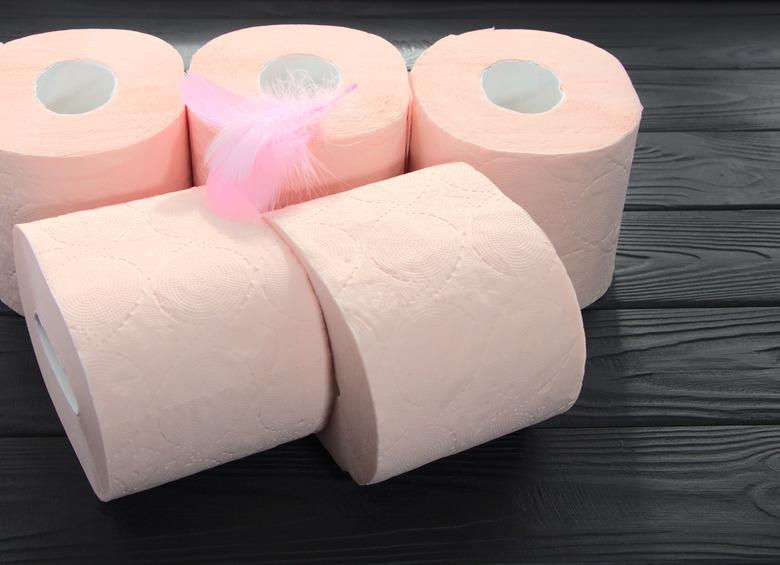Health Concerns With Colored Toilet Paper
When you think of toilet paper, one color most likely springs to mind — white. But in the past, it was a surprisingly big trend to have a monochromatic, matching bathroom. If your bathroom had a blue theme, for example, it was standard practice to match the shade with your toilet paper of choice. These days, though, seeing a colorful roll of toilet paper is extremely rare. So what happened to the vibrant toilet paper trend, and why?
History of Colored Toilet Paper
As a 2018 article published by Texas Hill Country magazine explains, the height of the colored toilet paper trend hit in the 1950s. Through the 1970s, it continued to be a popular interior design trend to opt for colorful bathroom suites, often in shades of pink, yellow, green or blue, with matching colored toilet paper.
But in the 1980s, the colored toilet paper trend rapidly declined. Now, it's very rare to see colored toilet paper. If you do want to purchase some, though, colorful toilet paper can be very expensive. Maybe it's something you'd purchase for a special occasion, but surely not for your everyday use. There are a variety of reasons for the decline in colored toilet paper, but a large one is the health concerns related to the trend.
Drawbacks of Colored Toilet Paper
One of the primary reasons for the decline in colored toilet paper is actually based in bathroom design. Nowadays, the vast majority of bathrooms are all white in design, meaning colored toilet paper would stand out and look stark or brash in comparison.
Modern bathrooms also tend to have a more minimalist design, and colored toilet paper is seen as somewhat dated or retro. On top of this, the dyes used in colored toilet paper make it more expensive and also make it slower to decompose, which may be problematic, particularly for those who rely on a septic system.
But there's another reason for the decline in colored toilet paper, and that's potential health concerns with using it. Terry's Plumbing explains that several negative health consequences have been discovered for those using colored toilet paper, which is a huge contributing factor to its fall in popularity.
Colored Toilet Paper Health Concerns
Wiping synthetic dyes where you usually use toilet paper may come with a wide variety of health risks. These can be relatively minor and treatable, like urinary tract infections, but can also be more serious. Any unnecessary artificial additive can cause disruptions in the careful balance of the genital organs. Dyes can also cause rectal irritation, and things can be even worse if you introduce artificial scents into the mix.
The U.S. Food & Drug Administration has an extensive list of rules and regulations surrounding the use color additives due to these potential health risks. When you factor in the potential harm of colored toilet paper alongside its high price, untrendy appearance and potential environmental effects, it's not hard to see why noncolored toilet paper seems to be the best choice.
